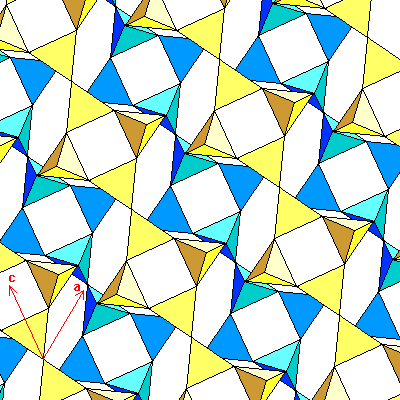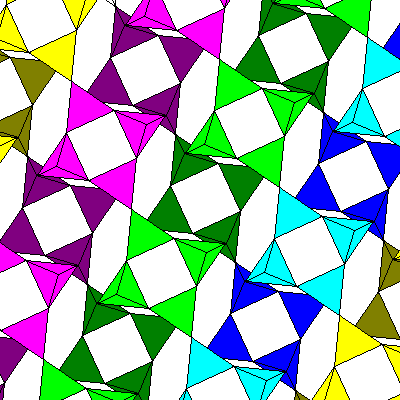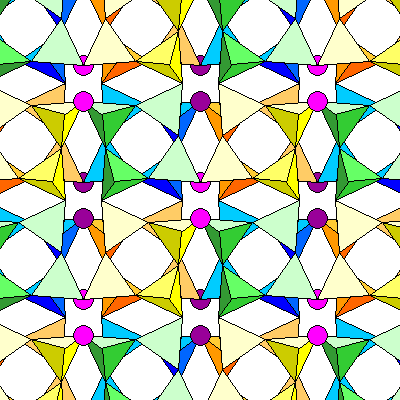Tectosilicates
Steven Dutch, Professor Emeritus, Natural and Applied Sciences, University of Wisconsin - Green Bay
Tectosilicates are characterized by three-dimensional frameworks of silica tetrahedra.
Silica polymorphs
Quartz and its polymorphs were once classed with the oxides in many references. It makes sense, since they are all silicon dioxide, but geologically, it makes far more sense to class them as silicates.
Quartz
Quartz consists of helical chains of silica tetrahedra which cross-link to make a continuous framework.

Tridymite
Tridymite is an odd duck. It bucks the overall trend of silica polymorphs to decrease in density as temperature increases. Also it seems to require water for synthesis.

Cristobalite
Cristobalite has cubic symmetry and a very open framework. Although it's the high temperature polymorph of silica, its transition temperature is far above the temperature of any magma. But it forms metastably in cavities in volcanic rocks and even in sediments.

Coesite
Coesite is a high pressure polymorph of silica, found in meteor impact structures, and a few ultra-high pressure gneisses. In the gneisses, it reverts to quartz as it is exhumed, but the resultant volume increase results in distinctive fracture patterns.

Stishovite
Stishovite forms at such high pressures that the silica tetrahedra break down and it becomes isostructural with rutile. Note the silica are octahedrally coordinated, not tetrahedrally.

Feldspars
Feldspars are aluminosilicates of Potassium, Calcium, Sodium, and rarely, Barium.




Feldspathoids and Foids
Scapolites
Compositionally, scapolite is essentially plagioclase feldspar with chloride ions and carbonate and sulfate radicals in interstices of the structure. The extra anions are balanced by extra sodium or calcium (and some potassium) atoms, so the formula can be written as plagioclase plus halite, calcite, or gypsum. The formula suggests environments containing both feldspar plus volatiles: typically contact metamorphic and metasomatic environments.

Zeolites
Return to Mineralogy-Petrology Index
Return to Thin-Section Index
Return to Crystals and Light Index
Return to Crystal Structures Index
Return to Mineral Identification Tables
Return to Professor Dutch's Home Page
Created 22 April 2013, Last Update
Not an official UW-Green Bay Site